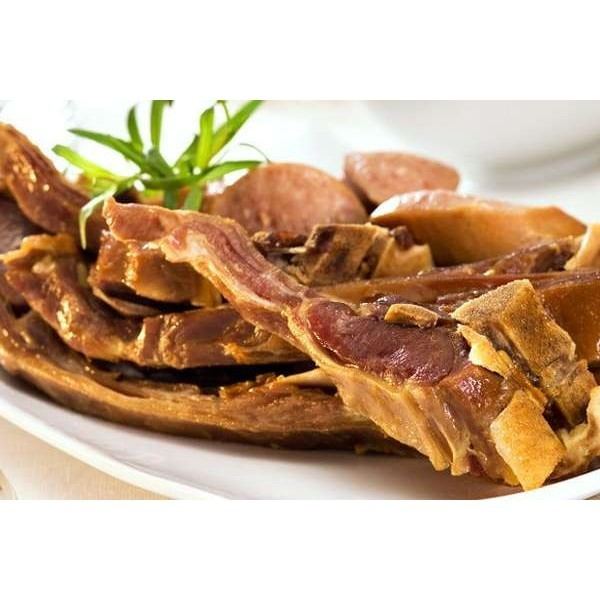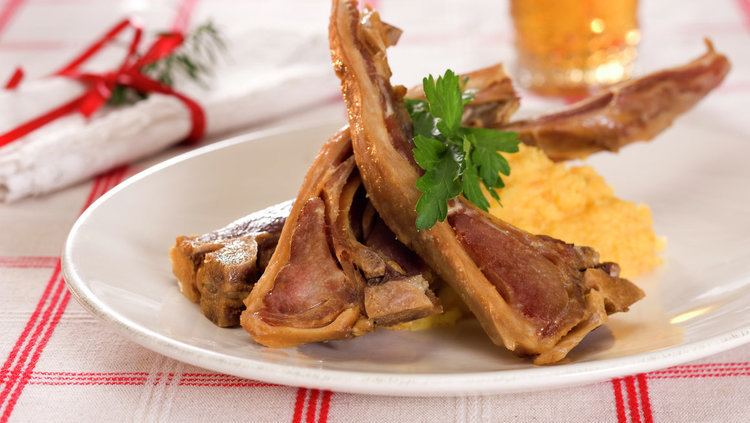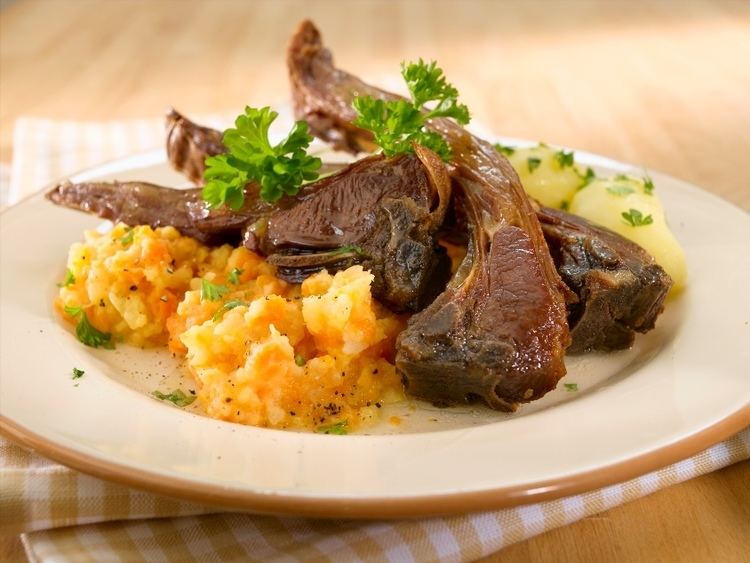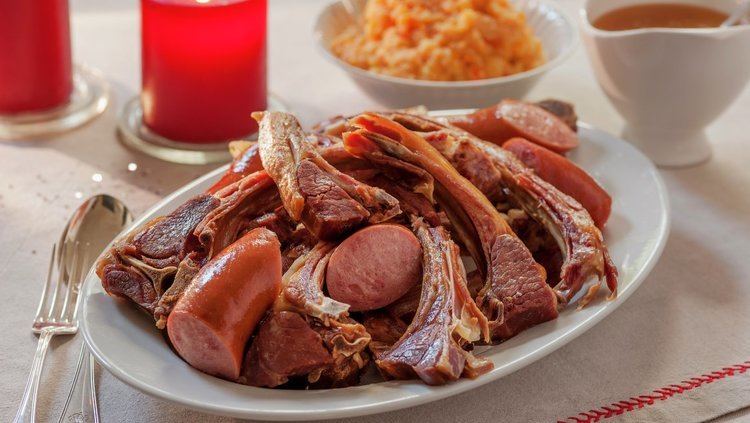 | ||
Similar Lutefisk, Pork ribs, Risalamande, Surkål, Rutabaga | ||
Eyvind hellstr m lager pinnekj tt
In Norway, Pinnekjøtt ([ˈpɪnːəˌçœt]), lit: Stick Meat, is a main course dinner dish of lamb or mutton. Pinnekjøtt is a festive dish typical to Western- and Northern Norway, and is rapidly gaining popularity in other regions as well. This dish is largely associated with the celebration of Christmas, served with puréed swede and potatoes, beer and akevitt. 37% of Norwegians say they eat pinnekjøtt for their family Christmas dinner. An ongoing discussion is the use of the Norwegian word "ribbe" as eastern part of Norway use the name "ribbe" for meat of pig ribs, while the western part of Norway use the name "ribbe" on ribs of sheep.
Contents

Matprat hvordan dampe tilberede pinnekj tt
Preparation

The preparation of pinnekjøtt uses a traditional method for food preservation utilizing curing, drying and in some regions also smoking as means of inhibiting the growth of micro-organisms. Although lamb is today available fresh or frozen all year round, pinnekjøtt is still prepared both commercially and in private homes due to the flavour and maturing the preservation process gives to the meat. In home preparation of pinnekjøtt, racks of lamb or mutton are cured in brine or coarse sea salt. Once sufficiently cured, and when the weather is cold enough, the racks are hung in a cool, dark, well ventilated place to dry. In some regions, particularly in parts of Hordaland, the fresh racks are smoked prior to curing. Traditionally this was done in order to prevent mold growth during the drying process. It was also a way that the Vikings used when transporting meat across long distances. This technique is still being used today in some countries during transport.

Before cooking, the racks are separated into individual ribs by cutting a sharp knife between the bones. The ribs must then be soaked in water in order to rinse out the salt and reconstitute the meat. Today pinnekjøtt is available in most supermarkets before Christmas, smoked or unsmoked, ready cut and sometimes also soaked, ready for cooking

After soaking the ribs are steamed over a little water in a large saucepan. A layer of twigs from the birch tree may be placed in the bottom of the saucepan instead of a metal steamer. The name pinnekjøtt (literally: stick meat) is disputed. It may refer to the birch twigs of the cooking process, but the word 'pinne' is in dialectal Norwegian also used in reference to single ribs - akin to "rib sticks", a dialectal expression in English.
